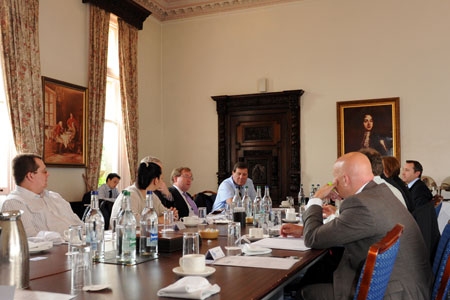Michelle Nasr, fleet services manager, Thames Water Fleet and Transport: We have a road risk steering group with representatives from HR, health and safety, insurance and fleet. You have to have lots of parties involved – there’s no one area that can make changes on its own.
Everyone is clear on where their responsibilities are on risk management and health and safety. We introduced this a year ago and are having fortnightly meetings initially. It is being driven by safety and cost falls out from this.
Mike Waters, director of market insight, Arval: We deal with a lot of fleets and their priorities are mixed: for some it’s safety; others find it easier to get buy-in for the cost benefits.
There are still instances where the fleet is a poor relation to the rest of the business. Many companies have a large health and safety team that is separate to fleet.
Fleet News: Has the grey fleet taken on greater importance within your businesses?
Amanda Nash, global director, corporate procurement, Intercontinental Hotels Group: We have a new expenses system so we can see who is claiming mileage and identify the size of the issue.
We are looking at driver training, but we need buy-in from employees – our company culture doesn’t mandate.
Tom Sayer: We are trying to eliminate ad hoc grey mileage by getting them to use rental.
Then we will only have a grey fleet that is funded by us where we have more control in areas like licence monitoring and insurance checks. The CO2 output in that fleet is much higher – our fleet average is 127g/km on an average age of two years; our grey fleet is more than 200g/km and six-and-a-half years old.
Financially, it’s better for us if they take the company car so we are encouraging them by widening the manufacturers on the list.
Amanda Nash: We have seen a significant number opt back in. We surveyed them asking how they choose their cars. They choose on lifestyle, then safety and then cost efficiency.
Brand is only fourth. As a result we changed the brands on the list and a lot opted back in. We also promoted the support services and duty of care so they are more conscious of the cars.
Tom Sayer: A quick win is to educate them about the benefits of being in the company car scheme.
Jon Sweet: We have pool cars at each depot for staff and they can also borrow company cars so there is little need for staff to use their own cars.
Fleet News: How do you benchmark the efficiency and cost-effectiveness of your fleet?
Amanda Nash: We get an annual health check from our leasing provider which compares us against three similar fleets in areas such as fuel costs, incident management, CO2 and cost per vehicle. It prioritises recommendations based on cost, risk and ease of implementation.
Peter Bonney: We have an issue with benchmarking because of our unique usage. Our year-on-year comparisons are of as much value as seeing what someone else is doing. We look at areas like end-of-lease changes, accident rates and accident costs.



















Login to comment
Comments
No comments have been made yet.